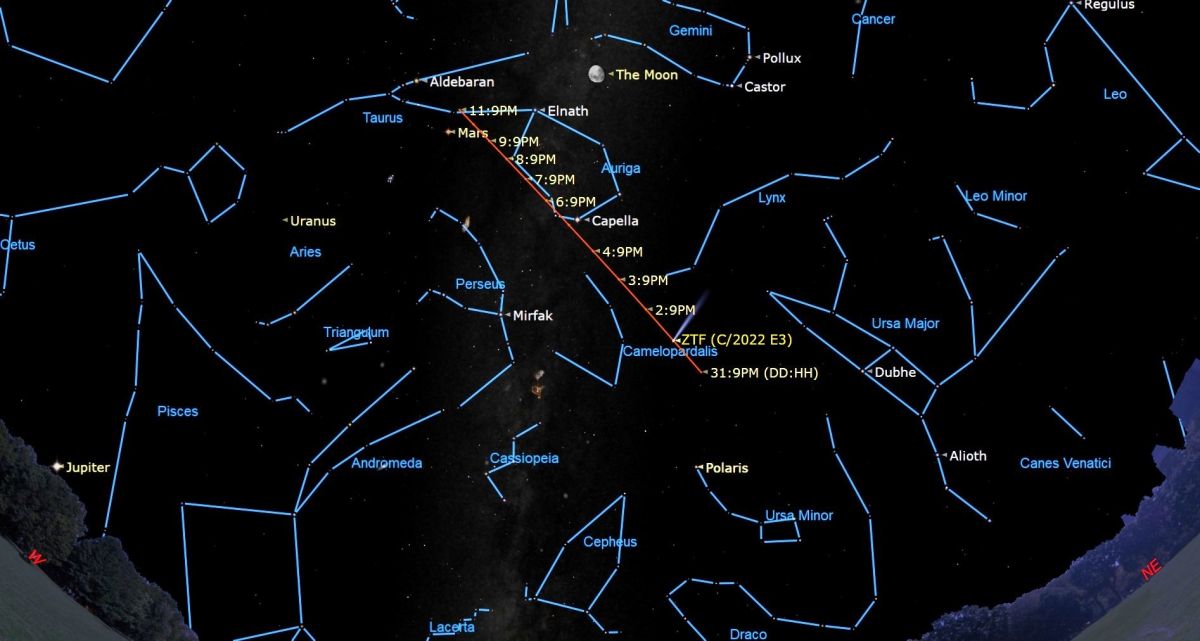Comet C/2022 E3 (ZTF) is making its closest pass by Earth, and you can watch it pass by for free without even stepping outside.
On Wednesday (Feb. 1), the comet will reach its closest point to Earth, known as perigee. Comet C/2022 E3 (ZTF) hasn’t been this close in 50,000 years and according to some predictions, it may never be seen again. That makes the close pass this week even more significant, as it could be our last chance to witness this “messenger from the outermost reaches of our solar system.”
While many skywatchers will be out braving the cold January nights this week to catch a glimpse of comet C/2022 E3 (ZTF), not everyone will have the right conditions, equipment or availability to see it. Luckily, the Virtual Telescope Project is hosting a free online livestream of comet C/2022 E3 (ZTF) at perigee courtesy of the project’s website or YouTube channel . The livestream begins on Wednesday (Feb. 1) starting at 11:00 p.m. EST (0400 GMT on Feb. 2).
Related: How to see the green comet C/2022 E3 (ZTF) visible in the night sky now as it approaches Earth
C/2022 E3 (ZTF) has already passed by its closest point to the sun and has led to some amazing astrophotography worldwide that shows off the comet’s gorgeous green tail .
Make sure to try and view the comet while it remains in the night sky, as this might be our last look at C/2022 E3 (ZTF) before it leaves our solar system. Geza Gyuk, an astronomer at the Adler Planetarium in Chicago, said in a statement that for comets similar to C/2022 E3 (ZTF) with highly elliptical orbits that swing them out to the outermost regions of the solar system, “it is very easy for them to have their orbit perturbed thus making them leave the solar system entirely.”
When it approaches on Wednesday (Feb. 1), the comet will be in the Camelopardalis constellation in the northern skies. While at perigee, the comet will be within 26 million miles (42 million kilometers) of Earth, equal to roughly 28% of the distance between the sun and Earth.
The comet should remain visible throughout the month and may be visible to the naked eye as a faint green glow in dark sky locations, but will certainly be visible through binoculars or a telescope.
If you want to see comet C/2022 E3 (ZTF) up close or try your hand at taking your own photos, be sure to see our guides on the best telescopes and best binoculars that can help. Don’t forget to also check out our guides on how to view and photograph comets, as well our best cameras for astrophotography and best lenses for astrophotography to get started.
Just remember: The amazing images of the comet featuring bright colors and a clearly-defined tail were taken with professional-level equipment and are usually stitched together from multiple long exposures. I caught the comet myself on Friday (Jan. 27) with a pair of tripod-mounted 25x magnification binoculars, and it appeared as a small, misty green smudge located just above Ursa Major. Still, any view of one of these distant messengers is worth it, whether online or in the night sky.
Clear skies and happy comet hunting!
Follow Brett on Twitter at @bretttingley (opens in new tab) . Follow us @Spacedotcom (opens in new tab) , or on Facebook (opens in new tab) and Instagram (opens in new tab) .
